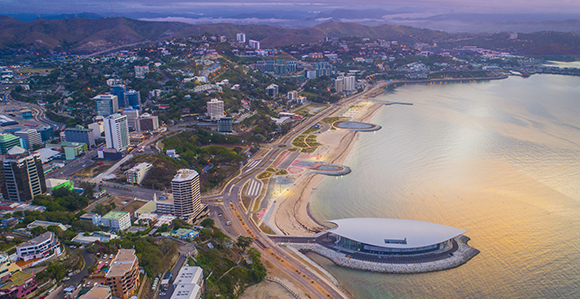What is the current economic status of PNG?

What is the current economic status of PNG?
The current economic status of Papua New Guinea (PNG) is shaped by a blend of challenges and opportunities, influenced by its abundant natural resources, growing population, and unique geopolitical position. Over the years, PNG has shown resilience in navigating economic hurdles while trying to capitalize on its vast resources and strategic position. In this article, we’ll explore the present state of PNG’s economy, examining key sectors, challenges, and prospects for the future.
Overview of PNG’s Economy
Papua New Guinea is often characterized as a resource-rich nation, with a wealth of natural resources including gold, copper, oil, and natural gas. These resources have historically been the backbone of the country’s economy, driving significant portions of GDP growth and export revenues. In addition to its resource wealth, PNG boasts a diverse range of agricultural products, forestry, and fisheries, which contribute substantially to its economic landscape.
According to the World Bank, PNG’s GDP in 2023 was estimated to be $28.59 billion USD, marking a steady recovery from the impacts of the COVID-19 pandemic. The country’s economic growth rate is projected to be around 4.1% in 2024, reflecting both the recovery in global commodity prices and increased investments in the mining and energy sectors【source】.
Key Economic Sectors
- Mining and Energy:The mining sector remains one of the most critical components of PNG’s economy, contributing about 30% of the GDP. Major projects like the Lihir Gold Mine, Ok Tedi Copper Mine, and the PNG LNG (Liquefied Natural Gas) Project play significant roles in generating export revenues. The LNG project, in particular, has attracted substantial foreign investment, making PNG one of the major LNG exporters in the Asia-Pacific region.
- Recent Developments: The reopening of the Porgera Gold Mine after a prolonged closure is expected to bolster production and enhance the mining sector’s contribution to the GDP. According to the International Monetary Fund (IMF), mining and quarrying output increased by 10% in 2023【source】.
- Agriculture:Agriculture is the largest employer in PNG, with over 80% of the population relying on subsistence farming and smallholder cash crops. The sector contributes around 20% to the GDP, with major exports including coffee, cocoa, palm oil, and copra.
- Challenges: Despite its potential, the agricultural sector faces challenges such as inadequate infrastructure, limited access to markets, and vulnerability to climate change. Efforts to modernize agriculture and enhance productivity are ongoing, with support from both the government and international organizations.
- Tourism:PNG has rich cultural heritage and biodiversity, presenting significant opportunities for tourism. The sector has shown growth potential, but the COVID-19 pandemic severely impacted it, causing a slowdown in international arrivals.
- Recovery: As global travel restrictions ease, there is optimism for a resurgence in tourism activities. The government has initiated programs to promote eco-tourism and cultural tourism, targeting niche markets interested in adventure and indigenous cultures.
- Manufacturing and Services:The manufacturing sector in PNG is relatively small but growing, focusing on food processing, construction materials, and textiles. The services sector, which includes banking, telecommunications, and retail, contributes significantly to urban employment and GDP growth.
Economic Challenges
Despite its resource wealth, PNG faces several structural challenges that hinder sustainable economic growth:
- Infrastructure Deficits:Poor infrastructure, particularly in transportation, electricity, and telecommunications, limits economic development. According to the Asian Development Bank (ADB), over 60% of PNG’s roads are in poor condition, affecting access to markets and services【source】.
- Political Instability:Political instability and governance issues have been persistent problems in PNG, affecting investor confidence and economic planning. The 2022 National Elections witnessed disputes and violence, highlighting ongoing political challenges.
- Social Issues:PNG grapples with social challenges, including high poverty rates, limited access to education and healthcare, and significant gender disparities. Nearly 38% of the population lives below the poverty line, according to the World Bank【source】.
- Environmental Concerns:The country’s rich biodiversity is under threat from deforestation, mining, and climate change. Balancing economic development with environmental conservation remains a critical challenge for PNG.
Government Initiatives and Future Prospects
The PNG government has initiated several reforms and strategies to address these challenges and promote sustainable economic growth:
- Vision 2050:PNG’s Vision 2050 aims to transform the country into a middle-income nation by focusing on human capital development, infrastructure investment, and economic diversification.
- Medium Term Development Plan (MTDP) III (2018-2022):The MTDP III prioritizes key sectors such as agriculture, health, education, and infrastructure, aiming to stimulate inclusive economic growth and improve living standards.
- Public-Private Partnerships (PPP):Encouraging PPPs is a critical strategy for infrastructure development and service delivery in PNG. Collaborative efforts with international partners are seen as vital for achieving economic goals.
- Sustainable Development Goals (SDGs):PNG is committed to the United Nations SDGs, focusing on poverty reduction, education, and environmental sustainability. Efforts to integrate SDGs into national planning are ongoing.
Conclusion
Papua New Guinea’s economy is at a crossroads, with immense opportunities and significant challenges. The country’s rich natural resources, diverse culture, and strategic location present avenues for growth and development. However, addressing infrastructure deficits, political instability, and social inequalities will be crucial for PNG to realize its full economic potential. By focusing on sustainable development, human capital investment, and economic diversification, PNG can build a resilient economy that benefits all its citizens. For more insights and current updates on PNG’s economy, consider exploring reputable sources like PNGeans and Business Advantage PNG.